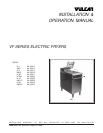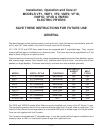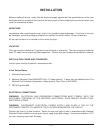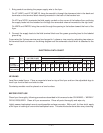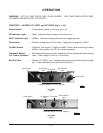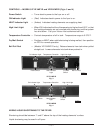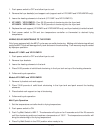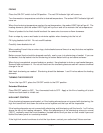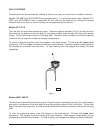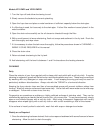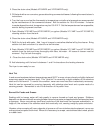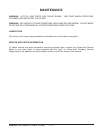
— 11 —
2. Close the drain valve (Models VF2/VMF2 and VF2D/VMF2D only).
3. Fill the tank with a non-corrosive, grease-dissolving commercial cleaner, following the manufacturer's
instructions.
4. Turn the fryer on and set the thermostat or temperature controller at a temperature recommended
by the manufacturer of the commercial cleaner. Boil the solution for 15 to 20 minutes. If cleaner
is a water based chemical, temperature may be 190-212°F. Set the temperature as low as possible;
monitor boiling to prevent overflow.
5. Drain (Models VF2/VMF2 and VF2D/VMF2D) or syphon (Models VF1/VMF1 and VF1D/VMF1D)
cleaning solution from the tank.
6. Close the drain valve (Models VF2/VMF2 and VF2D/VMF2D only).
7. Refill the fry tank with water. Add 1 cup of vinegar to neutralize alkaline left by the cleaner. Bring
solution to a boil and allow it to stand for a few minutes.
8. Drain (Models VF2/VMF2 and VF2D/VMF2D) or syphon (Models VF1/VMF1 and VF1D/VMF1D)
solution from the tank and rinse thoroughly with clear, hot water. All traces of cleaner must be
removed. Dry the tank thoroughly.
9. Close the drain valve (Models VF2/VMF2 and VF2D/VMF2D only).
10. Add shortening until the level is between 1 and 2 inches above the heating elements.
The fryer is now ready for use.
Heat Tint
In and around equipment where temperatures reach 500°F or more, straw-colored or slightly darkened
areas may appear on stainless steel. This "Heat tint" is caused by a slight oxidation of the stainless
steel and is not harmful. To contol this condition, never use more heat than is absolutely necessary.
Heat tint can be removed by scouring vigorously with stainless steel wool and a paste made of a
scouring powder. Remember to rub in the direction of the polish lines.
Burned-On Foods and Grease
Soaking with hot soapy water will help greatly to remove burned-on foods and grease. Stubborn
deposits can be removed with scouring powder mixed into a paste and applied with stainless steel wool
or sponges. Never use ordinary steel wool; particles of the steel wool can become embedded in, or
lodge on, the surface of the stainless steel and eventually rust, causing unsightly spots and stains.
Likewise, when scraping off heavy deposits of grease or oil from stainless steel equipment, never use
ordinary steel scrapers and knives. Where it is necessary to scrape, use stainless steel, wood, plastic
or rubber tools.



